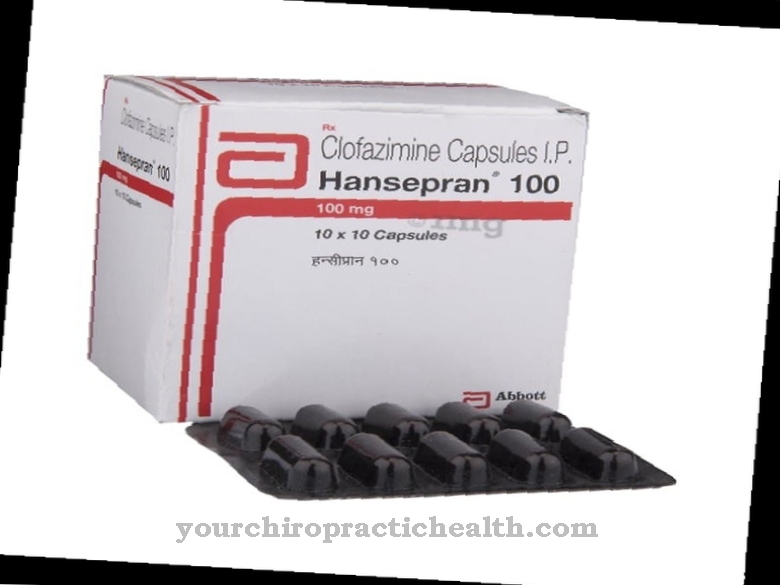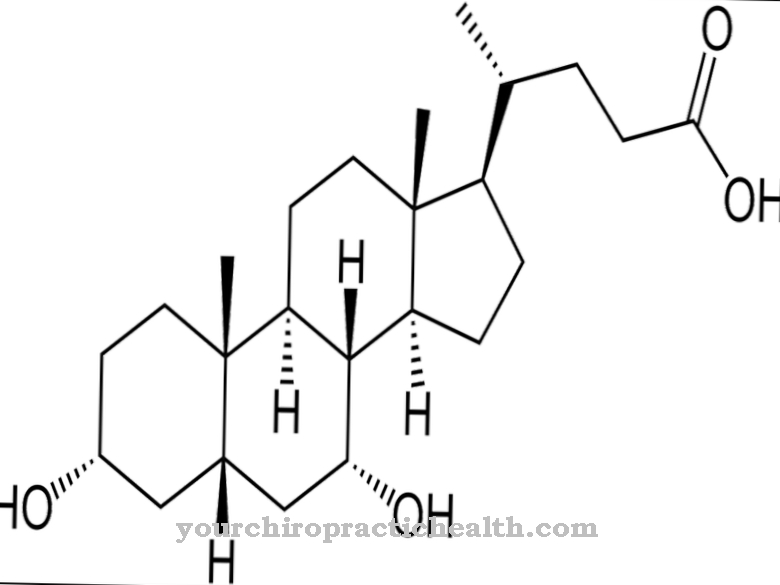Cromoglicic acid is an active ingredient that is mainly used for prophylaxis against allergic diseases. The active ingredient is generally administered in the form of inhalation sprays, capsules for inhalation, eye and nose drops and nasal sprays.
What is Cromoglicic Acid?

Cromoglicic acid belongs to the active ingredient group of cromones. Well-known derivatives of the chromone are, in addition to cromoglicic acid, flavones (yellow plant pigments) and also certain cardiac glycosides, such as B. the khellinin.
These derivatives are isolated from umbelliferous plants, while cromoglicic acid is produced synthetically. Because of its better water solubility, the disodium salt of cromoglicic acid is used in medicinal products. Cromoglicic acid and its salt are undissolved as a white, crystalline solid. To prevent allergic reactions, the active ingredient is always applied locally in the form of drops, sprays or inhalation.
Enteral intake (via the intestine) is not possible. The reason for this is to be found in the low lipophilicity (fat solubility) of cromoglicic acid or its salt. Cromoglicic acid acts directly on the mast cells and prevents the formation of inflammatory mediators such as B. the histamine. Since cromoglicic acid has a very short half-life, it must be used at least four times a day to prevent allergic reactions.
Pharmacological effect
Cromoglicic acid prevents the release of inflammatory mediators by inhibiting the chloride channels of the activated mast cells. Certain messenger substances, such as histamine or heparin, are stored in the mast cells and are responsible for the body's defenses.
Histamine in particular causes inflammatory reactions in the defense reaction. In the event of an allergic reaction, these messenger substances are released to a greater extent to combat normally harmless substances. Cromoglicic acid has an inhibitory effect on the release of the inflammatory mediators, although not immediately, but after several weeks of use. Therefore, the use of cromoglicic acid alone is unsuitable for an existing acute allergic reaction.
This allergy can only be successfully combated by long-term treatment with cromoglicic acid. However, the active ingredient is suitable for preventing allergies. However, the effects can take 2-4 weeks to develop. Therefore, treatment should begin several weeks before an expected allergy season.
Medical application & use
Cromoglicic acid is a long-term antiallergic agent. Typical diseases treated with cromoglicic acid are e.g. B. bronchial asthma, allergic rhinitis (hay fever), allergic conjunctivitis (conjunctivitis) and allergic reactions of the digestive organs.
As already mentioned, the treatment is usually used for prophylaxis because the effect only occurs after a considerable time lag. Cromoglicic acid has hardly any systemic effect because less than 10 percent of it is absorbed by the body. Therefore, the drug can usually only be applied locally to the affected areas. For the prevention and treatment of asthmatic diseases, however, there is also a combined use of cromoglicic acid with reproterol.
Reproterol has a bronchodilator effect and can initially relieve the acute shortness of breath that occurs in bronchial asthma. The long-term use of the combined drug in existing asthma leads to good treatment success in the long term, since the anti-inflammatory effect and the rapid relief of shortness of breath are combined in one drug.
Due to the poor absorption and the short half-life of cromoglicic acid, the drug has to be applied several times a day for weeks. For the treatment of food allergies, cromoglicic acid can also be taken orally in the form of capsules. Here, too, the active ingredient develops its influence locally on the intestinal mucosa after the capsules have dissolved in the intestine.
Risks & side effects
Cromoglicic acid is very well tolerated. Even with long-term use, side effects were rarely observed. However, one should bear in mind that any active ingredient can lead to hypersensitivity reactions with an appropriate physical constitution.
The side effects mentioned below can therefore be regarded as a basic risk. When using eye drops, in rare cases burning eyes, a foreign body sensation or even swelling of the conjunctiva may occur. Nasal sprays with cromoglicic acid can cause headaches or taste disorders.
Even with inhalation or oral use, hypersensitivity reactions such as skin rash, hives, gastrointestinal problems or breathing spasms occur in individual cases. Although the active ingredient prevents allergic diseases, allergic shock occurs in very rare cases. Unwanted interactions with other drugs are not yet known.






.jpg)





.jpg)



.jpg)










.jpg)
